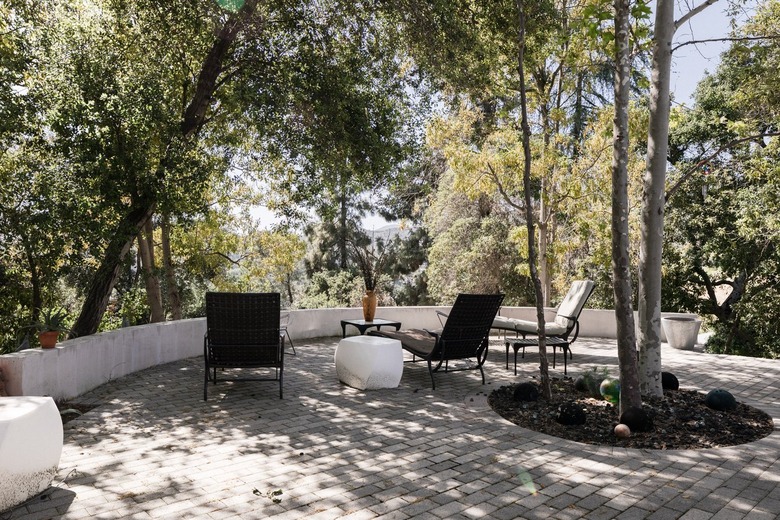How To Remove Mold From Between Pavers
We may receive a commission on purchases made from links.
What a kick it can be to complete a paver installation. Finally seeing that weed-filled gravel driveway, that crumbling brick walk, or that broken concrete patio replaced with brand-spanking-new pavers is beyond satisfying — until the passage of time reveals the nasty-looking mold that's been growing in the cracks. Fortunately, removing mold from between your pavers isn't difficult.
How Paver Mold Forms
How Paver Mold Forms
Mold isn't only found inside your home. Dark little cracks in your paver installation catch all the falling debris from trees and bushes that things like moss, mildew, and mold feed on. In high-humidity climates and in shady spots with a dampness problem, a narrow crack is a perfect breeding ground for mold. The unsightliness of mold on pavers and the possibility of tracking it into your house on your shoes warrants staying on the lookout for signs of mold growth and taking a smart approach to getting rid of it.
How to Remove Mold From Between Pavers
How to Remove Mold From Between Pavers
The best way to deal with mold that has formed between your pavers is to use a commercial cleaning product formulated for mold and mold stain removal. Many of these bleach-free, nonacidic products, like SRW Mold, Moss & Mildew Cleaner and Wet & Forget, are concentrates, but Wet & Forget also makes a ready-to-use formula for smaller areas that can treat 60 to 180 square feet.
If you're using the concentrates, you'll dilute with water according to the particular product's recommended ratio and then spray it onto completely dry pavers until saturated and leave it — no rinsing or scrubbing required. Some cleaners, like the SRW product, can be reapplied up to six times per year, but others, like Wet & Forget, recommend reapplying after one year. These cleaners should be applied when it's cool enough outside to ensure the solution won't evaporate too quickly and when there's no rain in the immediate forecast.
Avoid Vinegar, Bleach, and Pressure Washing
Avoid Vinegar, Bleach, and Pressure Washing
It's a fact, unfortunately, that when you search for how-to information online, you're going to run into blogs and articles promoting things you actually would do well to avoid. Such is the case with paver-washing advice. Three commonly touted approaches to cleaning mold from pavers involve the use of vinegar, bleach, and pressure washing. They may well affect the mold situation to varying degrees, but all of them cause other types of harm.
Vinegar, or acetic acid, can not only stain and etch your pavers but will also quickly burn and destroy any grass or plants around your paver installation. Bleach, which is not recommended for mold cleanup by the Environmental Protection Agency, is seriously phytotoxic, meaning that it can be poisonous to vegetation and can harm beneficial organisms in the soil.
Pressure washing your paver installation is doubly problematic. First, you're going to wash out enough filler sand to necessitate having to mess with refilling the cracks afterward, but worse, subjecting your pavers to high water pressure can do serious damage to the stones themselves.
How to Prevent Paver Problems
How to Prevent Paver Problems
Prevent mold problems by making sure your paved areas stay dry. Provide drainage to keep water from pooling. Move patio furniture periodically so covered areas have a chance to dry out. Along walks and driveway edges, cut back any overhanging vegetation.
In addition to unsightly mold, pavers can show problems like shifting, cracking, and chipping after exposure to weather conditions and general wear. To prevent shifting, keep an eye on the need to replenish sand filler in the cracks with extra sand kept on hand. Set aside leftover pavers after the installation so you can replace any that show damage.
